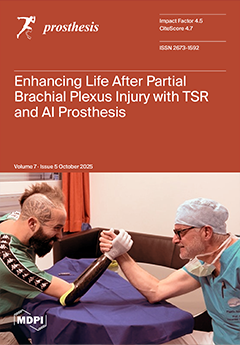Implant placement requires a digital workflow and the use of surgical guides. However, there is divergence in the angulation length of influence and precision. Therefore, a 3D assessment is also required. This insertion study aims to evaluate the accuracy in vitro by utilizing guided templates, deviation analysis, depth, and orientation over different lengths and angles.
Methods and Materials: This study comprises a total of 180 implants placed in 90 resin-printed mandibular models, divided into nine groups (a 3 × 3 factorial design,
n = 20/group). A reference model was created using Real GUIDE software (version 5.3), integrating a CBCT scanner (Carestream CS 9600, Medit Corp., Seoul, Republic of Korea) and an intraoral scanner (Medit i900) (Medit Corp., Seoul, Republic of Korea). Implant planning and surgical guide design were digitally executed and printed with Mazic resin (Vericom Co., Ltd., Chuncheon, Republic of Korea). Implants were placed using Oxy Implant PSK Line (Oxy Implant, Brescia, Italy) fixtures in mannequins. Postoperative CBCT scans were used to measure deviations in angular, vertical, and lateral dimensions using CS Imaging (v8.0.22) (Carestream Dental LLC, Atlanta, GA, USA). Statistical analysis was run by using SPSS v26.
Results: The results demonstrated that implant angulation significantly impacted the precision of placement. Angulating escalation leads to intensive deviations, which are linear and angular calculations. On the one hand, the most significant deviations were observed at a 25° angulation, particularly in the buccal and lingual apex regions. On the other hand, 0° exhibited minimal deviations. Longer implants showed reduced angular deviations, whereas shorter implants (8.5 mm) exhibited higher vertical deviations, particularly at 0° of angulation. Moderate angulation (15°) with 11.5 mm implants provided the highest precision, while 0° angulation with 15 mm implants consistently exhibited the least deviation. These findings pinpoint the fundamental importance of angulation and implant length for exceptional placement accuracy.
Conclusions: This study demonstrates the influence of placement accuracy with static guides on implant angulation and length. Moderate angulation, which is (15°), enhances accuracy, particularly within 11.5 mm implants. On the other hand, steeper angles (25°) and longer implants (15 mm) result in elevated deviations. Guidance formation and operator experience are also vital.
Full article





